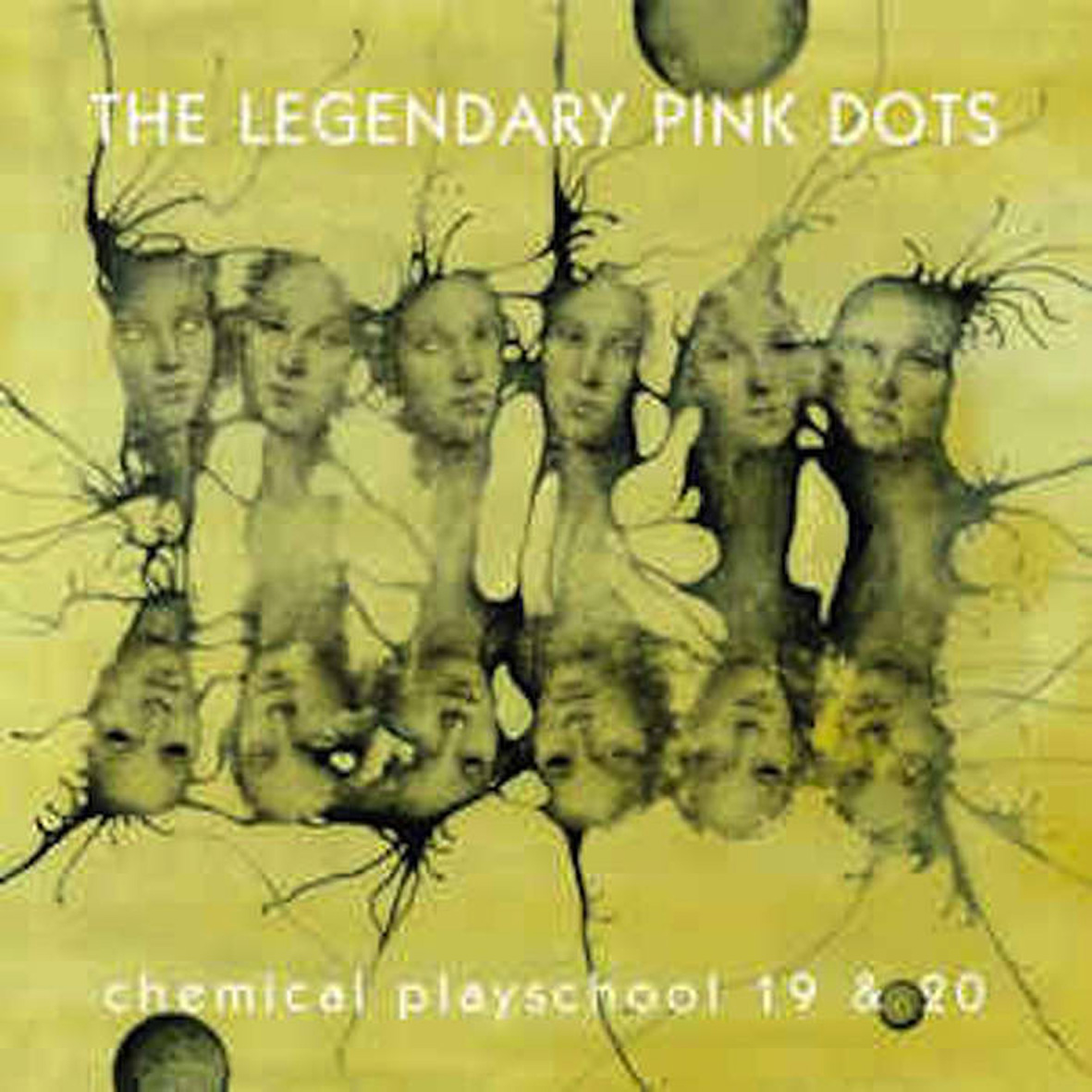- Administrator
- Albums and Singles

Mike Cooper's output of the past half century has been described as "post-everything." It's a fitting phrase really when you consider he has been at the beating heart of so many critical musical moments. From the development of the blues touring circuit in the UK, through the growth of the folk scene and into the explosion of free improvisation that came to define a generation of UK musicians. Amidst it all, working at stitching these disparate forms into some kind of deterritorialised zone, was Mike Cooper.
It’s fitting then, that he explores the notion of journey on his latest full length edition. Even more fitting that he examines the vessels that carry us on journeys. With Raft, Cooper charts his interests in ambient exotica and collides it with his research into various South Pacific musical traditions. The record extends his palette considerably, stretching away from the hypnogogic flows of his master piece Rayon Hula, into a more oceanic setting. "Raft 21 Guayaquil To Tully," for example, sets out a lilting rise and fall of harmony which erupts with spluttering electronics.
Specifically inspired by Vital Alsar and William Wills, sailors who undertook some of the 20th centuries most impressive solo voyages, Raft reflects upon the determination of the solo traveller. In a musical sense, Mike Cooper's work of recent years has very much reflected a determined solo traveller work ethic. In his commitment to travel alone, he has developed a range of strategies that he works against as a means of surprising himself and uncovering unfamiliar sonic relations.
This approach has proved an incredibly fertile pursuit for Cooper, arguably producing some of his most affecting and engaging works, his Room40 albums Fratello Mare and White Shadows Of The South Seas amongst them. Raft is a vital record that sets its sights beyond the horizons of convention and in doing so reveals a perspective that is only available to lifelong voyagers such as Mike Cooper.
Out July 7, 2017 on Room40.
Read More
- Administrator
- Albums and Singles

"Like The Pet Shop Boys jamming with Whitehouse"
After a three year silence, mysterious Chicago duo Acteurs return with not only new music, but the debut of new label MILD VILNC. Their signature bleak - downtown punk sound remains intact, welded together by stark noise and a tense momentum. It's minimal all around but not lacking for substance, each track pushing the boundary between simplicity and unknown force.
The 5 tracks collected on the Corridor EP show Acteurs turning their already strong aesthetic on its head, opening it up from the other side. Mini mantras butt up against scrapes and drones, tied together with rhythms built and taken apart again. It's the sound of a future you may not want to be a part of, but we don't really have a say in that do we?
More information can be found here.
Read More
- Administrator
- Albums and Singles

In late 2014, Planning For Burial's Thom Wasluck left the red house in New Jersey he’d called home for the last decade to return to his childhood bedroom in the mountains of Pennsylvania. Back in the house where he grew up, Wasluck found himself cut off from the familiarities of the previous decade as he put himself to work in the family trade. The monotony of routine quickly set in; work, home, and alcohol day after day became the norm. The childhood room that had given birth to his primordial four-track recordings was now a place of emptiness. These conditions set the stage for Planning For Burial’s third full-length, Below the House.
In terms of genre, Planning For Burial is often simply characterized as "gloom," which can be seen as a blend of slowcore, shoegaze, doom, 90s alt rock and drone, and this album offers nine sullen and frequently heavy songs that brim with nostalgia and suburban ennui. It is a return to form of sorts to his beloved first album, 2010’s Leaving — an introverted work characterized by its heavy dynamics and personal obsessions.
Since the beginning, Planning For Burial has been a solo endeavor. Wasluck has been recording music himself and touring extensively as a one-man band, playing hundreds of shows in DIY spaces and nightclubs, where he has shared the stage with acts like Deafheaven, King Woman and Chelsea Wolfe. Both incredibly loud and intimate, Planning For Burial plays with an unrivaled passion and funereal grace that is equally at home in basements and large venues.
Out now on The Flenser.
Read More
- Administrator
- Albums and Singles

The union of two creative forces with notable experience in the esoteric, Teleplamiste have emerged with a debut album of magical intensity and ecstatic fortitude. Frequency is the New Ecstasy conjures an audial liminal zone in which ancient methods and futuristic visions collide and collude.
This duo is formed by Mark O. Pilkington, whose work has extended from publishing countercultural and arcane literature with Strange Attractor Press to summoning rural drone reveries with Urthona, and Michael J. York, who brought his wide knowledge of traditional wind instruments to bear in bands that include Coil, Cyclobe, Guapo and The Stargazer's Assistant. The duo blur vintage synthesis and contemporary electronics with acoustic pipes to create a transcendent reverie that exists on a wavelength beyond both retro fetishism and modern-day machinations.
These six long, meditative pieces map out and extend into the infinite a pathway from the eerie realm of mid-twentieth century radiophonics, and the work of minimal iconoclasts like Daphne Oram and Else Marie Pade, through the kosmische music of the '70s such as Cluster and Tangerine Dream to contemporary modular synthesists such as Keith Fullerton Whitman and Lichens, following a vision imbued with power and singularity. Heavy ambience and otherworldly atmospherics marry here amidst an aura of epiphanic radiance.
Rich, transporting and thoroughly immersive, Frequency is the New Ecstasy is a thing of trance states both euphoric and unheimlich.
Out now on House of Mythology.
Read More
- Administrator
- Albums and Singles

A distillation of cultural memory through electronic process, James Place —the creative guise of New York native Phil Tortoroli, returns with his third release for Umor Rex. The sonic realization of love and loss, re-sculpted for the Post-Modern age, pursuing his glacial take on techno into newly intimate depths.
Departing from a line in TS Elliot’s Four Quartets "the moment in and out of time," its works take form through the haze of a dream. Over the course of several months Tortoroli tracked heaps of live stereo jams at home, jamming on his drum machine, sampler, polysynth, and effects setup. Poring over these hours of hazy jams, Tortoroli heard himself straining for an additional voice to further emote. Rifling through a vast library of old bounces and experiments, Tortoroli rediscovered the music of Sam Sally to complete Voices Bloom, resampled live and again "subdued into explorations of an old practice."
Voices Bloom is the musicality of cultural collage, immensely personal and intimate, arms stretched out, gathering diverse sonic worlds. The artist and his craft as a self-reflexive lens for an electronic age —a sonic patchwork heard from afar— impressions of memory, drawn close to the heart. Within the album’s cool displaced tones, rise nostalgic romances, drifting rhythmic works which defy the beat. A world where time enters multiple frames, those possible, literal, implied, forgotten, and remembered anew. The final results on Voices Bloom are the most reflective yet from James Place. The hopeful kosmische beats and hauntological synth music on previous albums, and more delicate melodies, riding crisp minimal rhythms that flow elegantly from vignette to vignette. Rhythms of abstract techno with glistening melodic lights.
Out May 19, 2017 on Umor Rex.
Read More
- Administrator
- Albums and Singles
Fully re-mastered with full artwork, detailed notes, & bonus download
"The songs on Against Which the Sea Continually Beats are successful as well-crafted vignettes, drawing listeners into a pleasant, powerful world where the strongest bonds and emotions cannot fully be captured by mere words." - PopMatters
|
|
|
|
| Glenn Jones on Facebook |
| Glenn Jones on Thrill Jockey |
Read More
- Administrator
- Albums and Singles

Kate Carr melds the exquisite details of her field recordings with an ephemeral approach to the song. This Australian has relocated herself to London after many trips around the globe. With each orbiting journey, she has collected innumerable sounds from the urbane to the aqueous and from the frenetic to the sublime, contextualizing all of these into compositions rippling with primordial melodies through guitar, piano, voice, and electronics. The Story Surrounds Us follows her highly acclaimed albums I Had Myself A Nuclear Spring (first released on her own Flaming Pines imprint in 2015) and Carr's debut for Helen Scarsdale in 2016, It Was A Time Of Laboured Metaphors. Emblematic of her work is a gentle dislocation between the environmental sounds and her drone-dub ellipses of somnambulant melody. The clatter of a frozen dock or a vibrational shimmer from rustled objects or the unintelligible whispers displaces the sense of self amidst a sea of disparate symbols and coded thought. More a travelogue in and out of one's own body than to any particular place. Carr suggests "In a way, it is about restlessness, an uncomfortable tossing and turning in all these many different places, a struggle somehow to forge a connection between my own internal world and all these places and persons I have encountered. I think this holds a sense of unease and strain, with both beautiful and failed moments of intimacy and connection which are made either possible or impossible in the difficult and distorted context of being away. It is quite sad, really." Look to Carla dal Forno, Alan Lamb and those moments of clarity in the shapeshifting ethos from Jewelled Antler for neighboring sounds to Kate Carr's chimerical compositions.
more information can be found here.
Read More
- Administrator
- Albums and Singles

Tara Jane O'Neil describes her latest album Self Titled as a "singer songwriter" endeavor.
At the invitation and by the design of Mark Greenberg (The Coctails), half of this record was recorded mostly live at Wilco’s Loft Studio in Chicago with a band that included James Elkington, Gerald Dowd, Nick Macri, and Greenberg himself. Another half was made in TJO’s home studio in California with Devin Hoff, Wilder Zoby, Walt McClements and string supervisor Jim James. This album also features the voices of Chris Cohen, Carolyn Pennypacker-Riggs and Joan Shelley. Tara Jane ONeil plays guitar, bass, keyboards and percussion.
As a solo artist she has released eight full-length albums internationally. O’Neil was a founding member of Rodan, the Sonora Pine , amongst other ensembles. She has collaborated on recordings and stages with Papa M, Michael Hurley, Little Wings, Marisa Anderson, Catherine Irwin, Mirah, Mount Eerie, and many many others. She has also performed at clubs, galleries, and DIY spaces around the world and venues such as the Centre de Pompdou, the Whitney Museum of American Art, and All Tomorrow’s Parties. She starred in the cult classic film Half-Cocked. Her visual art work has been shown in cities including London, Tokyo and Portland and has been published in three monographs.
More information can be found here.
Read More
- Administrator
- Albums and Singles

A few years ago we received an anonymous email with a link to three tracks and a simple message: "Hi, maybe you would be interested in this music." It’s easy to be skeptical of yet another link from yet another artist in a world overcrowded with them, but listening is our job and so we do it. The songs were instantly striking: extraordinarily slow, somber, and spacious, each vaulted cathedral chord reverberating poetically into the distance, the melodies rolling out like fog across a cemetery. Captivated, we requested more, receiving a single word in response: "Yes." Then, nothing. Eventually, three months later, we received another email with slightly more information: a name (Irma Orm), a location (Stockholm), and a bit of context (she worked alone, and progress on music was slow but steady).
Fast-forward to mid-2016: we're informed the album is complete, and it is breathtaking. Hermetic gothic swan songs conjured from funereal piano, twilit ambience, minimalist percussion, and spellbinding vocals. The mood is lulling and lush but lost in sorrow, stark grey structures looming in the night. Majestic open spaces between notes heighten the melancholic grandeur of Orm's arrangements, blurring the line between lament and lullaby. The songs less end than ebb away, succumbing to their own downcast beauty.
More information can be found here.
Read More
- Administrator
- Albums and Singles

Michigan trumpeter Justin Walter's solo work centers on evocative, intuitive explorations of the EVI (Electronic Valve Instrument), a rare wind-controlled analog synthesizer from the 1970s. Its unique, smeared tonality allows for an expressive range of glassy, jazz-like textures, which Walter loops and layers with hushed electronics and twilit trumpet, painting opaque landscapes of resonant beauty.
Walters 2013 debut, Lullabies & Nightmares, included a handful of collaborations with percussionist Quin Kirchner but Unseen Forces finds him fully solo, refining the project to its essence: shape-shifting watercolors of pastel haze, lit by the soft synthetic glow of electric breath. It's a sound both modern and timeless, fusing emotion and technology, gauze and melody, force and fragility.
from Justin Walter:
"Unseen Forces is a collection of recordings that document the use of improvisation as a means to create sounds that can either function on their own or serve as the foundation of, or source material for, additional improvisation.
There was a definite process used to create this music but at no point was any music ever written or composed. When putting this music together I was often aware of feelings related to density, spacing, silence, and the sense of time pulling back on itself, like trying to stretch a scene and pull on it in ways that distort it ever so slightly. This is a record of melodies, alone and in complex relation.
This music is a reflection of both feeling, and thought, as much construction as composition. The recordings of the EVI, as well as the sequencing done using samples of those recordings, are mostly the result of exploring melody through intuition. Harmonically simple, but with a complex palette of texture."
More information can be found here.
Read More
- Administrator
- Albums and Singles
 Over the last two decades or so, my Legendary Pink Dots fandom has gone through quite a few different phases, but my current self is most enamored with the Chemical Playschool series.  Each new installment always feels like a large and mysterious gift-wrapped box that unexpectedly shows up at my house, stuffed full of plenty of random things that I did not particularly want and a few revelatory surprises that absolutely knock me sideways (finding the latter is always the fun part, obviously).  This latest plunge into the band's unfettered experimental urges, quietly released for the band's fall 2016 tour, is an especially rich treasure trove: it does not so much feel like a meandering psychedelic fever dream of orphaned ideas and studio experiments so much as a rich tapestry of evocative and coherent themes expertly blurred together into a mesmerizing fantasia.  This is easily one of my favorite LPD albums in recent memory.
Over the last two decades or so, my Legendary Pink Dots fandom has gone through quite a few different phases, but my current self is most enamored with the Chemical Playschool series.  Each new installment always feels like a large and mysterious gift-wrapped box that unexpectedly shows up at my house, stuffed full of plenty of random things that I did not particularly want and a few revelatory surprises that absolutely knock me sideways (finding the latter is always the fun part, obviously).  This latest plunge into the band's unfettered experimental urges, quietly released for the band's fall 2016 tour, is an especially rich treasure trove: it does not so much feel like a meandering psychedelic fever dream of orphaned ideas and studio experiments so much as a rich tapestry of evocative and coherent themes expertly blurred together into a mesmerizing fantasia.  This is easily one of my favorite LPD albums in recent memory.
Uncharacteristically, Chemical Playschool 19 opens with "Real World," an actual catchy song that sounds like it would have easily fit on one of the Dots' more accessible album intended for (relative) mass-consumption.  Thematically, however, it fits very much into the overarching theme of sardonic commentary on the modern world that runs throughout the album.  Of course, "Real World" never quite reaches the finish line (this is a Chemical Playschool album, after all), appropriately dissolving into lysergic abstraction only to cohere anew as the similarly song-like (but much stranger) "El Cid."  Bizarrely, all of this material was recorded all the way back in blissfully pre-Trump and pre-Brexit 2015, which makes the tone of political pessimism eerily prescient, though that timeline might explain Ka-Spel's fixation on guns here, as 2015 was yet another prolific year for mass shootings in the US.  This year will probably be prolific in that regard too, but xenophobia seems to have seized the zeitgeist and become the hotter trend here these days.  Perhaps that will be the theme of the next pair of Chemical Playschools.
In any case, "Real World" and "El Cid" reveal themselves to be mere appetizers for a mesmerizing 30th anniversary re-envisioning of Asylum's classic "So Gallantly Screaming."  Edward Ka-Spel is in peak form, delivering a blackly funny and rhyming indictment of America over a simmering bed of drones and electronics ("Now the Hollywood sunset is served in a can").  As much as I love the content, I may love the phantasmagoric and shifting structure even more, as Ka-Spel drifts in and out of the piece, sharing the spotlight with a wonderfully surreal and sometimes nightmarish collage of samples.  The remainder of the Chemical Playschool 19 disc does not offer any more dazzling centerpieces of that caliber, but the quality level and focus stay atypically high with the gently burbling and shuffling reverie of "Sunset Strip" and the foreboding and industrial-damaged "Impeccable Machine." The languorous, understated and warped psych-rock of "How Many Fingers?" is especially wonderful, making me wish it were a stand-alone song. Part of that is highly subjective, as I always prefer Ka-Spel's wry and/or laid-back vocals to his more urgent ones, but "Fingers" also offers a very cool bass line and some nice flourishes of backwards melodies.
The Chemical Playschool 20 disc initially feels like more of the same, opening with a solid "rock" song ("Hysterical") followed by some woozy, synth-based ambient drift, but then the bottom drops out and the album plunges into a deep rabbit hole of utter derangement with "iTranslate."  Following a brief big band-style fanfare, Ka-Spel turns up to nervously announce the call letters of a fictional radio station (his halting and weary delivery resembles that of someone who has been in an interrogation room without sleep for a few days).  Then a considerably more animated radio announcer takes the mic to let me know that they are about to present the first ever interview with an alien from outer space (with Ka-Spel acting as translator, of course).  It initially seems like the Dots at their most cringe-inducing and proggily indulgent, but then it becomes unexpectedly very funny as the translation gets increasingly awkward and lewd ("may we eat and may we drink each other and exchange…biological yogurt?"). Then, after a sustained interlude of buzzing, druggy abstraction and warped choral samples, the band erupts into the best "song" on the album: "Amy in the Underworld," a delightfully kitschy bit of psych-pop built upon a foundation of skittering drums, liltingly melodic vocals, and swirling hallucinatory weirdness (Erik Drost even sneaks in some very surf-sounding guitar at the end).
Following the atypically radiant, major-key, and almost Beatles-esque balladry of "Miss August" (it thankfully gets a bit darker and more fractured as it progresses), the album comes to an end with a pair of absolutely perfect pieces in a row.  The first, "Carnival Cracker," is admittedly quite a brief one, but its blown-out cheap synth tones and maniacally insistent beat feel like a gleefully out-of control post-mutiny parade at a psychiatric hospital. Those short-lived festivities draw a close with the epic "The Answer (At Least for Today)," which captures Ka-Spel in narrative mode once more, this time in the guise of an omniscient sage dismantling the entirety of our mundane reality and understanding of time over a faintly sinister bed of The Silverman's synthesizers.  Again, Ka-Spel is in top form, managing to seem impossibly wise, witheringly sardonic, and playfully absurd all at the same time ("or you eat the alarm clock because it tastes like blueberries").  With an appropriately simmering backdrop of vague menace and the right degree of deadpan, messianic gravitas, Ka-Spel can make  just about anything seem like the most rarefied and profound revelation.  When I think about why I love the Legendary Pink Dots, it is generally pieces like "The Answer" that spring to mind–those rare and precious moments where it feels like I am receiving an intergalactic transmission of ancient wisdom refracted through a fog of psychedelics.
Of the two discs, I prefer Chemical Playschool 20, though it is not necessarily better than Playschool 19.  In fact, the first disc probably has the stronger songs and melodies.  On the album's second half, however, the band seem far more intent on breaking away from their expected trajectory and go much further out on their already rather outré limb.  Far more important than the differences between the two halves, however, are the similarities: while the whole point of the Chemical Playschool series is ostensibly to give free rein to more experimental urges, this latest plunge into the Dots' singularly skewed collective psyche shows welcome signs of rigorous editing.  While the content itself is certainly no less strange and adventurous than usual, it feels like all of the unnecessary fat and water-treading has been excised.  None of these pieces ever overstay their welcome and the band never gets lost in amorphous, space-y drift (a recurring peril in this series).  Instead, this double-album just seems to flow seamlessly and purposefully from one strong idea to another with no unnecessary lingering or filler to slow the momentum.  Also, the strong ideas are even stronger than usual, as there are at least three pieces here that could feel right at home on my imaginary personal The Best of the Legendary Pink Dots collection.  I truly have nothing to gripe or grumble about here: this is a legitimately great release from start to finish.
 
 
Read More


